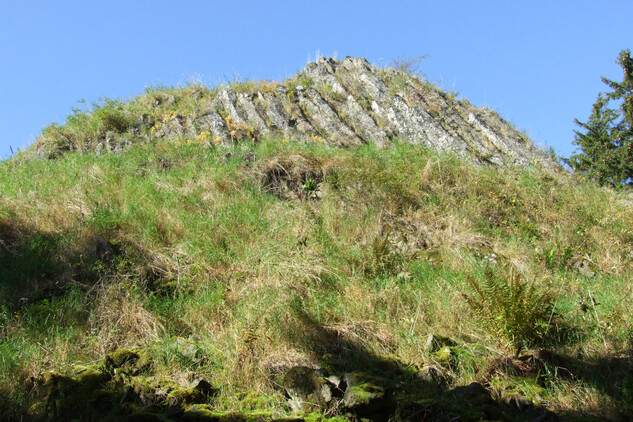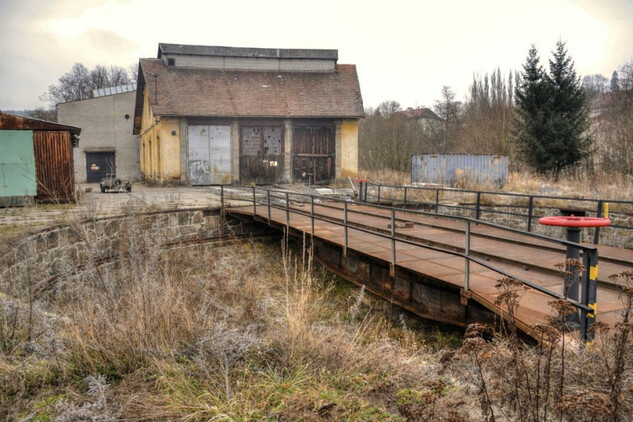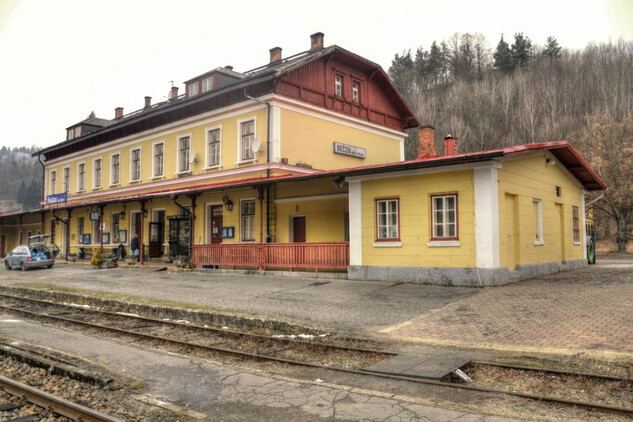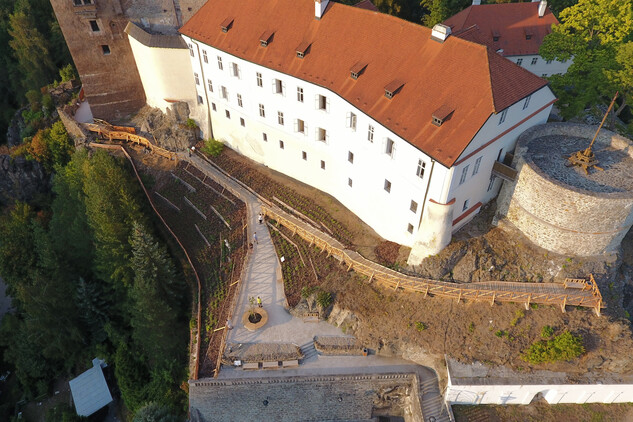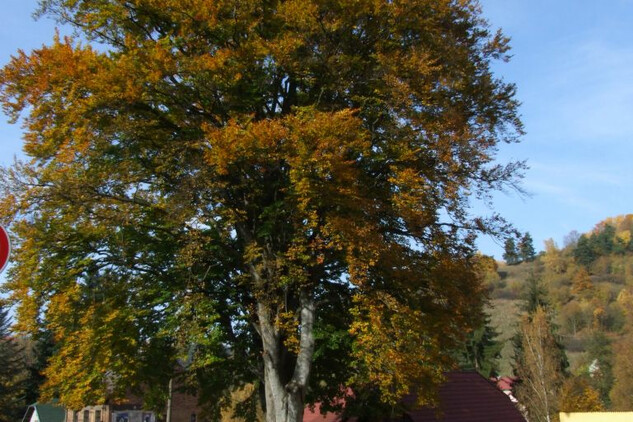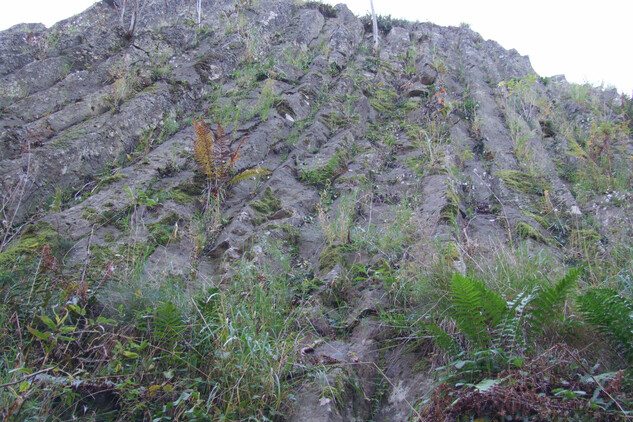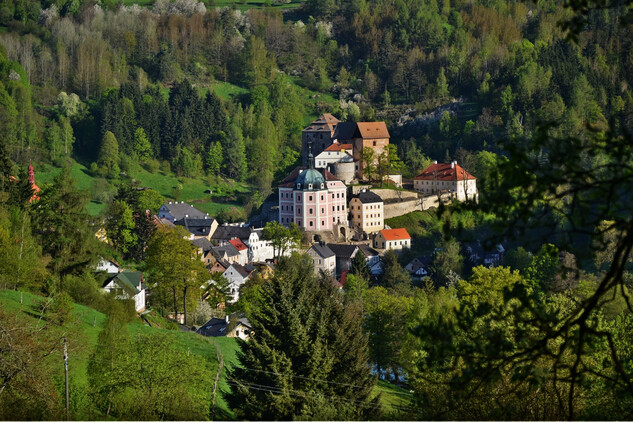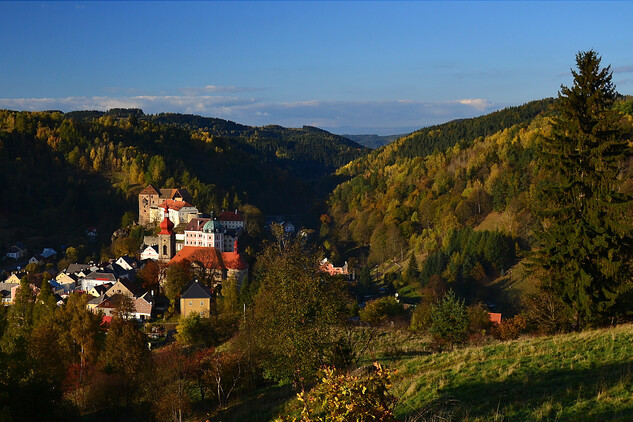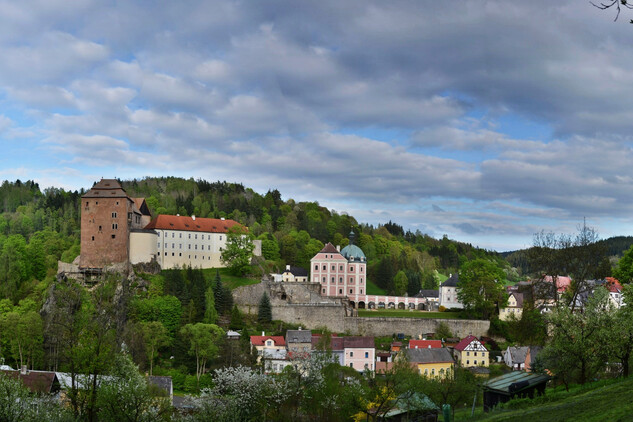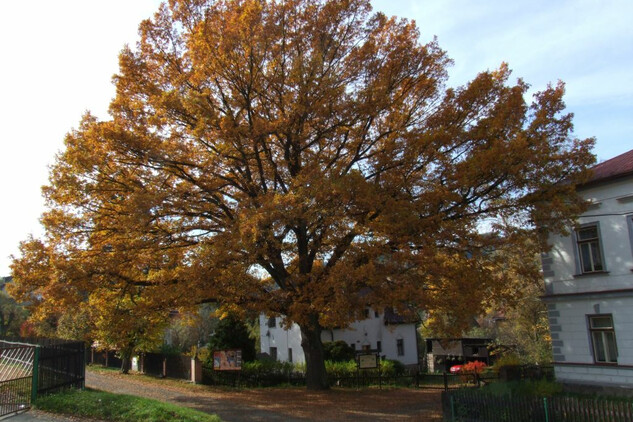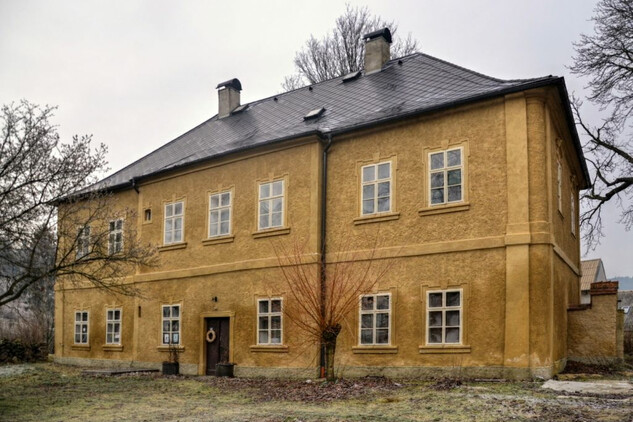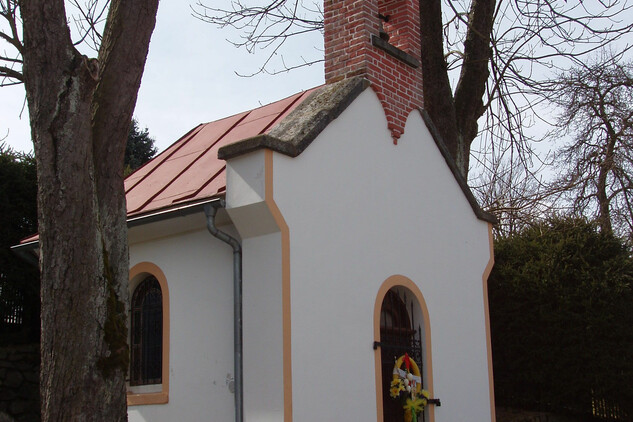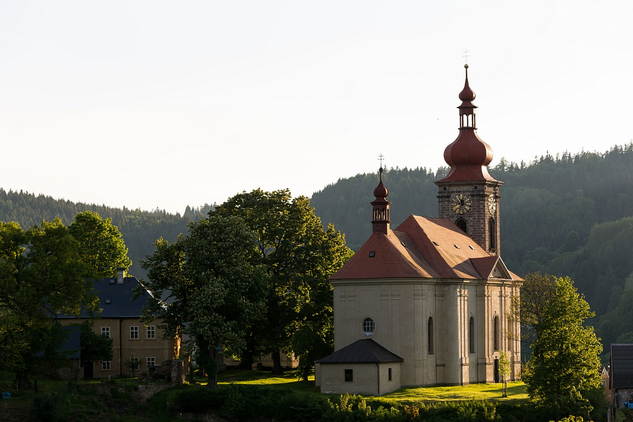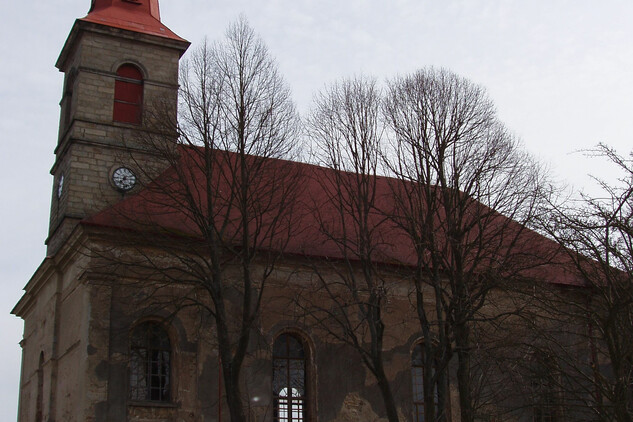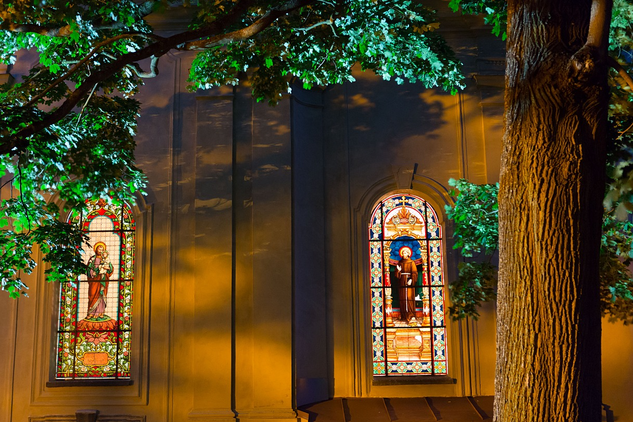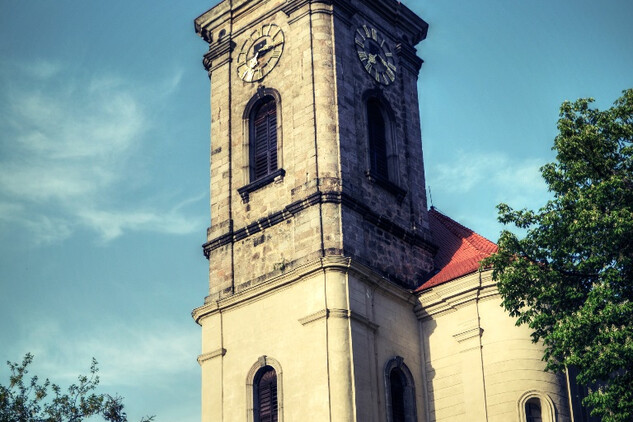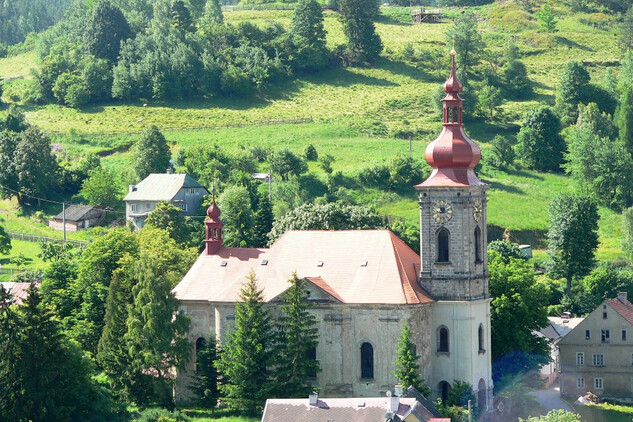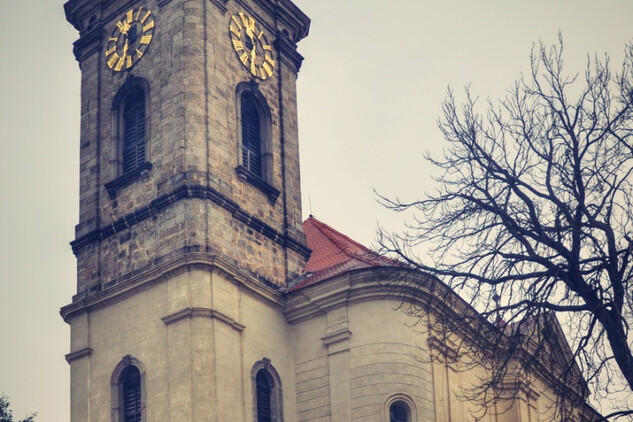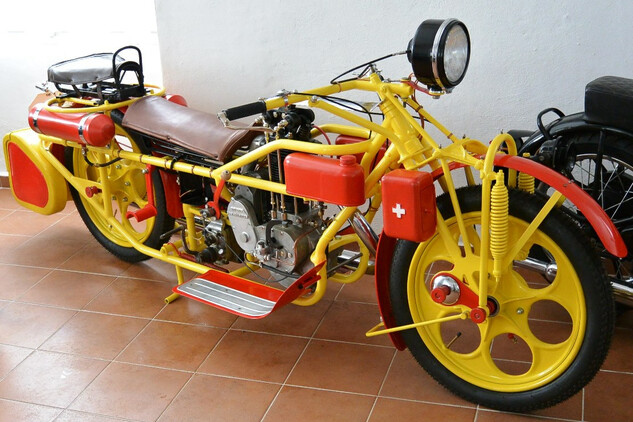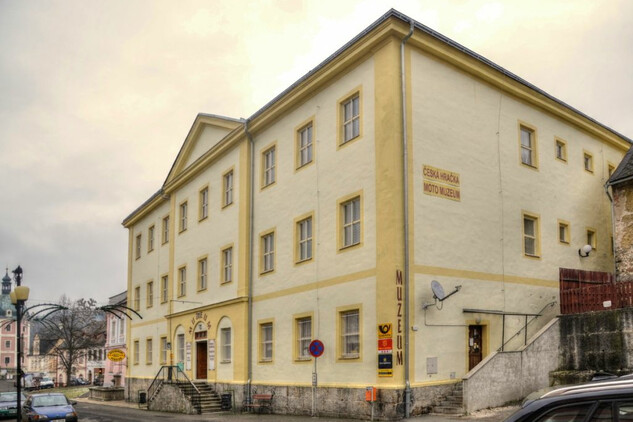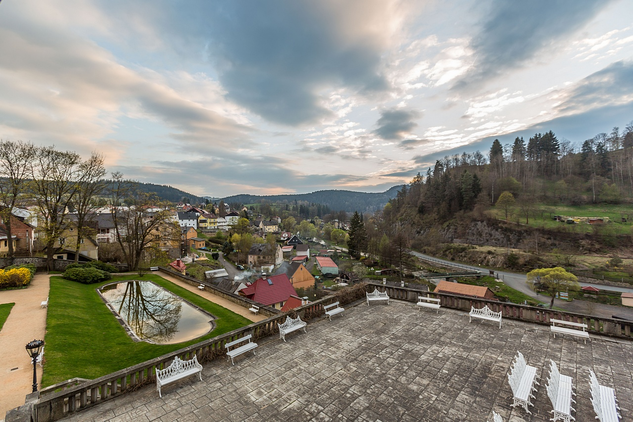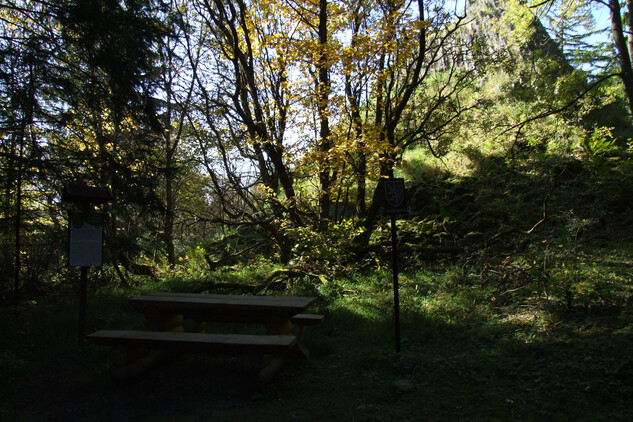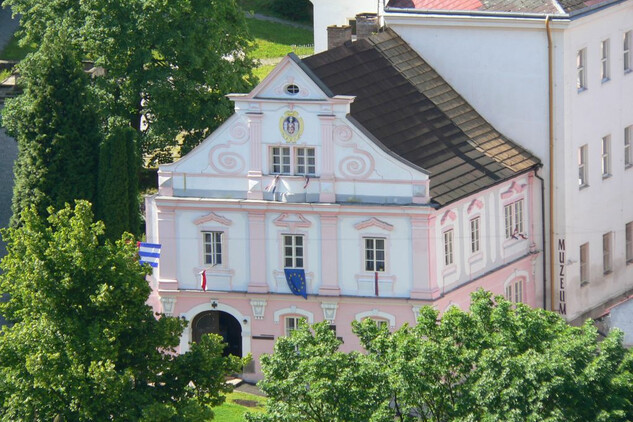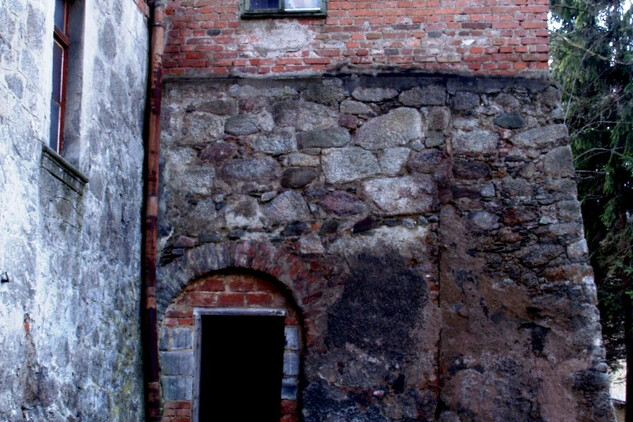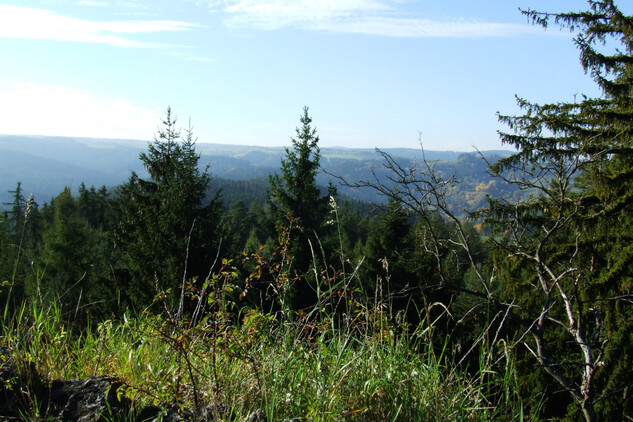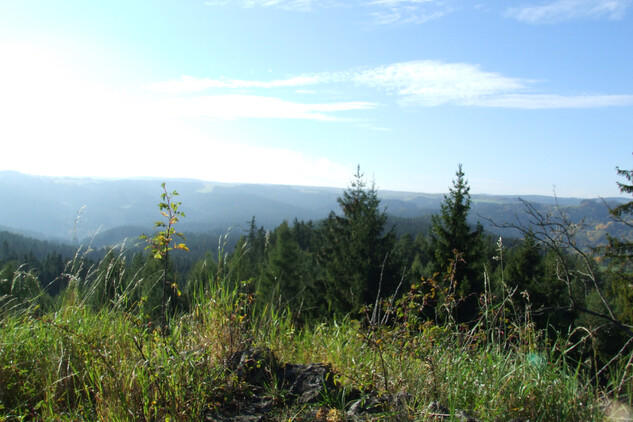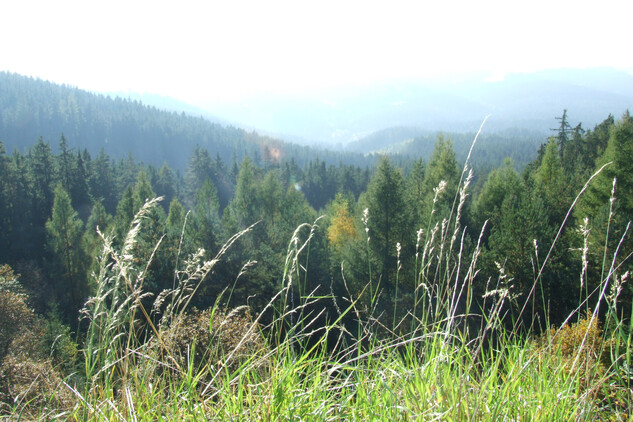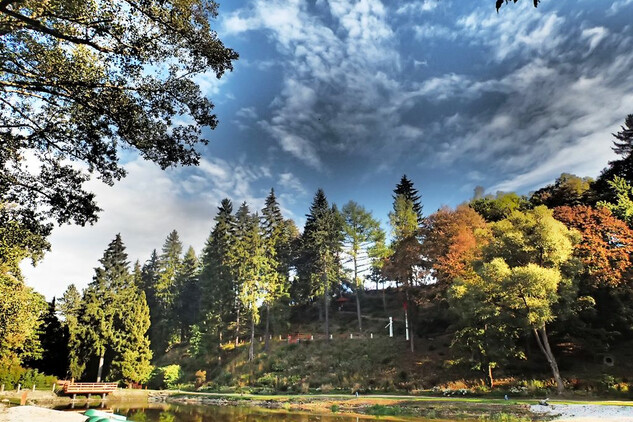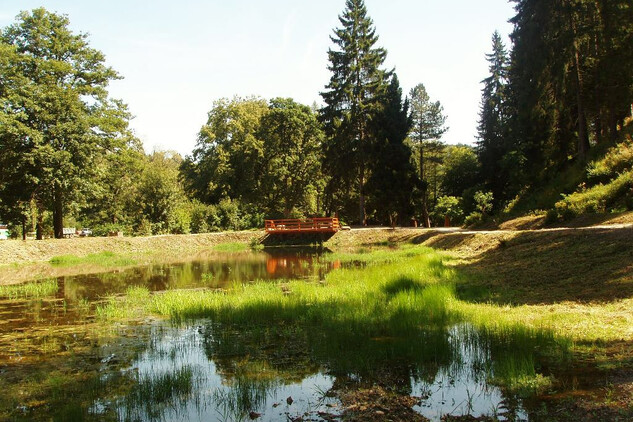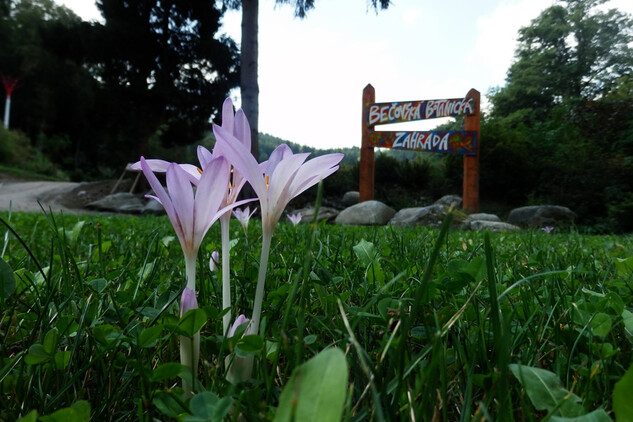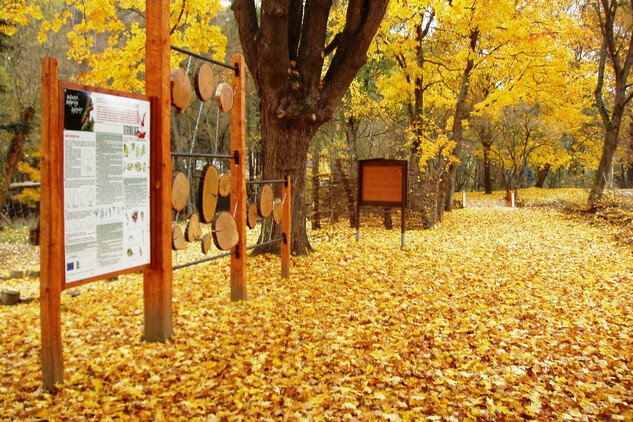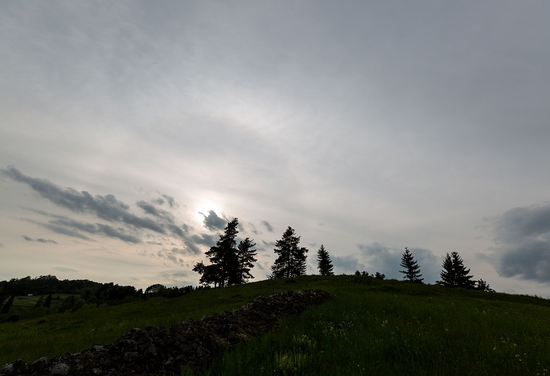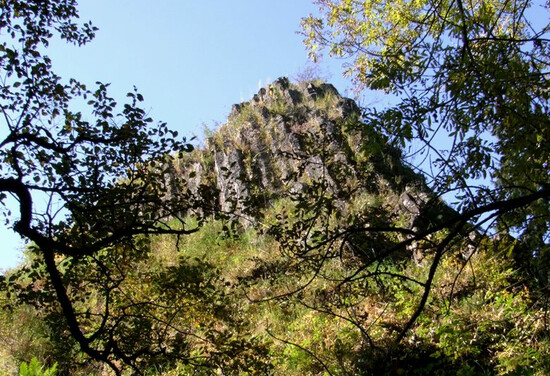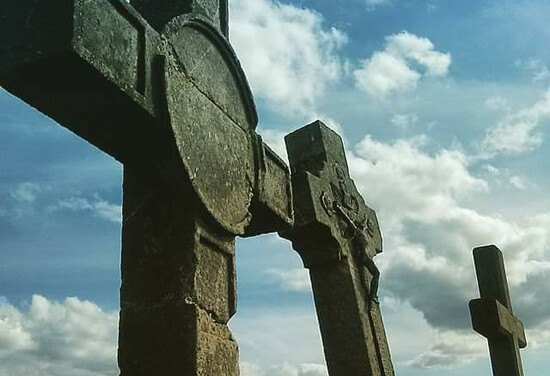- Length: up to 120 min
- Refreshments: There are several restaurants in the town, a French pancake shop and a convenience store. There is a food stall for visitors in the Bečov Botanical Garden.
- Wheelchair accessibility: No
Trip Route Through the Centre of Bečov nad Teplou
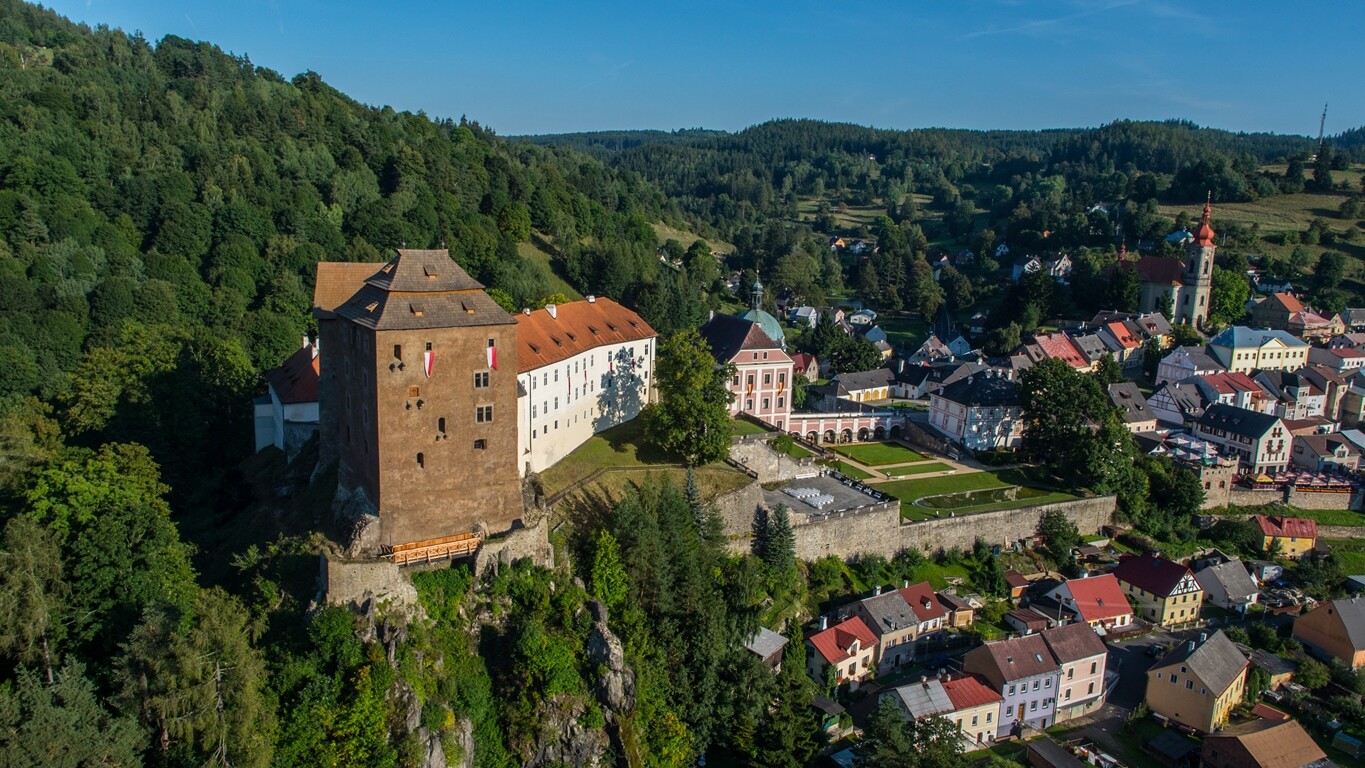
Apart from the castle and chateau, there are many tourist sights in Bečov nad Teplou. Do not hesitate to see some of them when you visit Bečov.
What to expect?
Easy circuit route, about two kilometres long, going through the centre of Bečov nad Teplou.
Where to park?
You can start the walk at the Botanical Garden where you can also park your car. There are other car parks near the route, opposite the Stará pošta restaurant (near the railway crossing), at the Mariánskolázeňská street, at the Hradní Bašta guest house, in the square, at the elementary school and at the shopping centre.
What to see?
The Bečov Botanical Garden is definitely worth visiting - it is a collection garden founded under Heinrich Beaufort-Spontin, the last owner of the Bečov manor. Today it is a place of quiet contemplation as well as active relaxation with a wide range of valuable tree species.
There is a set of cultural sights of the Bečov railway station opposite the garden.
Bečov nad Teplou used to be the home of one of the oldest Jewish communities in the Karlovy Vary Region, first mentioned in the first half of the 14th century. The Jewish synagogue remains are one of the few reminders of the history (you can also see the restored Jewish cemetery opposite the train station).
In the local Museum of Historical Motorcycles and Toys, you can see not only unique motorcycles but also bikes, wooden toys, family puppet theatres and puppets.
The town is dominated by the castle and chateau as well as the St. George´s Church with a parsonage located on the opposite hill.
The journey between the church and the last stop - the elementary art school - will be livened up by several legacy trees.
And now, you are ready to set off...
Start at the Bečov Botanical Garden.
"Works whose result is affected mostly by time and continuous, relentless care, include works of garden and landscape architecture. A lot has been said and written about their beauty, transformations, dynamics and ephemerality. A builder can see his work in all its beauty almost immediately, whereas a gardener and nature lover must wait for the results of his efforts. The former Beaufort rockery in Bečov nad Teplou is one of such works..."
The collection garden was founded under Heinrich Beaufort-Spontin, the last owner of the manor, and his wife Marie Silva-Tarouca. Marie Beaufort´s father was Arnošt Emanuel Silva-Tarouca, the founder of the Průhonice park. The task of building a collection garden was successfully completed by Johann Koditek, the court gardener, who made it no secret that: "If it is not certain that the state will look after the work of his Excellence Silva-Tarouca, I wish to found such a rockery whose size and number of species will surpass the one in Průhonice."
In 1925-1927 an unused 19-hectare slope was purchased. The exhibitions were devoted to plant collections of different continents. Elements of fine garden architecture such as resting places, arbours and viewing spots were a must. In 1931, there were 321 plant genera of 1005 species, usually 3 specimens of each. In the same year, the part called "the Alpine Meadow" was created as well, where nearly 300 more species were planted. The list of plants was updated annually, including clear numbering, planting layout and short descriptions. The old gardeners had to deal with unfavourable local conditions and were forced to do various experiments.
There was hardly any maintenance done to the garden between WWII and 2005. However, ČSOP Berkut got involved in the garden restoration. In cooperation with the National Heritage Instittute, the State Castle and Chateau Bečov Management, the Town of Bečov, Slavkovský Les Protected Landscape Area and the Forests of the Czech Republic, garden reconstruction started.
A number of valuable tall conifers have been preserved in the garden premises - firs, tsugas, pseudotsuga and spruces. Cercidiphyllum and Phellodendron amurense, or Amur cork tree, which is the 2006 "Hero Tree" of the Czech Republic, are two of the local rare deciduous trees.
Across the river, there is a set of several cultural monuments forming the railway station premises. Railway waterworks, turntable and water cane are the most interesting structures. The local railway is one of the most beautiful ones in Bohemia. Passangers can enjoy views of the untouched nature of Slavkovský les and many technical solutions in the difficult terrain - 44 bridges (stunning view of Karlovy Vary from Doubský bridge) and 7 tunnels.
Then you will continue down the paved road along the Teplá River. After about 200 metres, you will pass a bridge with a monumental smithery work, which is the result of a smithery symposium. Carry on down the same road and after another 400 metres, at a smithery sculpture again, start walking up the stairs. The remains of a Jewish syngogue are on the right of the staircase.
The oldest proof of Jewish inhabitants in Bečov dates back to the period of reign of John the Blind, and therefore the local Jewish community was probably one of the oldest ones in West Bohemia. Since the 17th century at the latest, the houses of the Jews in Bečov were put together in a special Jewish street (now Poštovní street). This ghetto was connected to the square on the northern and southern end by two house passages. As the Jewish ghettos were dissolved, the Jewish community in Bečov nad Teplou ceased to exist gradually; yet the Jews were the most significant religious minority in the otherwise purely Catholic town until the 1920s. Since then the regular services stopped and in 1932 the synagogue was pulled down due to static issues. Only the robust wallwork remained, and today there is a car park above it.
At the top of the stairs, turn left around the next smithery work and walk through the guest house passage (the original Jewish ghetto entry). You will find yourself in the square - you can see the chateau on the left and the majestic building of the former district court, now the Museum of Historical Motorcycles and Toys, on the right.
The Museum of Historical Motorcycles in Bečov nad Teplou displays more than 50 historical motorcycles as well as historical bikes and motorcycle engines. The exhibition also includes some unique machines, such as the first DKW motorcycle, PUCH 500 with a four-piston twin-cylinder engine, Schüttoff 500 OHV and other exceptional motorcycles. There is an exhibition of wooden toys, family puppet theatres and puppets on the first floor of the museum.
There is a small exhibition of the Ironing and Laundry Museum consisting of 300 related items in the same building.
Go back a little and turn right behind the fountain; go one street higher - to Kostelní street. Your eye will definitely be caught by a loudly decorated Baroque house - now the town council building and a column with the statue of Virgin Mary Immaculata in front of the town hall, built in 1680 at the expense of Jan Adam Questenberk, the then owner of the manor. The column was restored in 1990s; today there is only a copy of the original statue on its top, you can see the original in the town hall lounge.
Turn right from the town hall and walk up Kostelní street to St. Georg´s Church built in 1763-1767 after a big town fire in the place of some older buildings. The interiors are generally equipped with items made by local artists and craftsmen. In 1834 the church was modernized (supported by the year above the entrance), now the interior is Rococo. The church entrance is bordered by metal fence with sheet metal reliefs of Christ, Virgin Mary, St. George and St. Michael from 1926.
There was a cemetery around the church until 1862, chestnut trees were planted in the area after the cemetery was removed. Today there is a nice view of the chateau and the road to Pilsen. The Baroque vicarage building from 1760 is right next to the church. Walk past the legacy linden alley to Toužim road. Here you can decide whether you want to continue straight up the Šibeniční vrch educational trail or to the left to the Pilsen road, where you can see a beautiful legacy beech after about 200 metres, which is one of the biggest ones in the Karlovy Vary Region.
From the legacy tree, go back to the crossroads, continue straight and after a group of family houses turn left to the elementary school at a small park. In front of the school you will see WWI victims memorial with the names fo 76 fallen citizens from 1932, which is located in the former school garden. The memorial was restored in 2015.
Walk past the elementary school and the shopping centre to the Josef Labitzký Elementary Art School. Bečov nad Teplou is a town with a musical tradition. In the second half of the 17th century, the numerous Collegium Musicum fraternity was established in Bečov, which had 823 members in 1883.
Josef Labitzký who became famous in the world not only as a concert master but also as a talented composer and later the director of the Karlovy Vary Spa Orchestra, was one of the most renowned pupils of the local music school.
Music became rooted in the lives of all social groups in Bečov. And thus on 16 March 1887, a public music school was opened in Bečov, with German as the teaching language, which later quickly evolved in a type of school similar to a conservatory.
Bečov built its town house of music, a school building with a concert hall, as early as in 1900. Double-manual concert organ was installed in 1913.
Fine arts have been taught here since 1995.
There is a robust legacy oak right next to the Elementary Art School; walk past it down Nová street and take the stairs back to the river. Turn left under the stairs and you will already see the starting point of your walk

